续rary to popular belief, there are actually many ways tostart a businessthat let you focus less on the logistics and upfront costs and more on getting your ideas started. Let’s get you past the first major mental hurdle of “I want to start a business but have no ideas.”
These 26 small business ideas make a great entry point for beginners, bootstrappers, or anyone with a busy schedule, and let you pick up aside businesswithout having to drop everything else.
Get your free Big List of Business Ideas
Looking to start a business but unsure what to sell? Check out our free Big List of Business Ideas with 100+ trending products.
Learn MoreBest small business ideas to start in 2023
- Start a dropshipping business
- Design and sell print-on-demand t-shirts
- Launch your own book
- Create digital products or online courses
- Sell print-on-demand posters, greeting cards, and prints
- Start a charitable business
- Sell a service
- Create an online fashion boutique
- Sell handcrafted and homemade goods
- Build an audience you can monetize
Whatever your business type, you will need a good domain name (use ourfree domain name generator) associated withan excellent brand nameanda representative logo.
26 small business ideas
1. Start a dropshipping business
Buy stock, store it, pick it, pack it, ship it. Managing inventory is a big commitment when you’re running a business.
Dropshippingis an easy, low cost, business idea to start and the first of our good business ideas. Dropshipping is a fulfillment model where a third-party supplier stores and ships inventory to customers on your behalf. It’s one of the best businesses to start because it’s low overhead, hands-off, and scalable.
TIP:With Shopify, it’s easy tostart a dropshipping businessand start selling without the hassle of managing inventory, packaging, or shipping. Orders are sent directly from your wholesaler to your customers, so you can work on what matters—your products, marketing, and customers.
You don’t need to handle any products yourself—you just need to make the sales and pass orders on to your supplier. In fact, it’s one of the quickest and cheapest businesses to start.
You can curate products from one or more suppliers into your own online store under a theme that focuses on a specific niche, like gear for yoga enthusiasts or water bowls for dog owners. When a customer buys a product from you, the order is sent to your supplier, who fulfills it on your behalf. However, you are still responsible for your own marketing and customer service.
There are both local and overseas suppliers you can work with, as long as you can establish a relationship with them built on trust—an unreliable supplier will reflect poorly on your brand.
Dropshipping is a great way to test product-market fit and launch a business before you invest in your own original products. Just be sure to always order a sample for yourself to make sure your supplier is reliable and that the quality of the products is fit for selling to your customers.
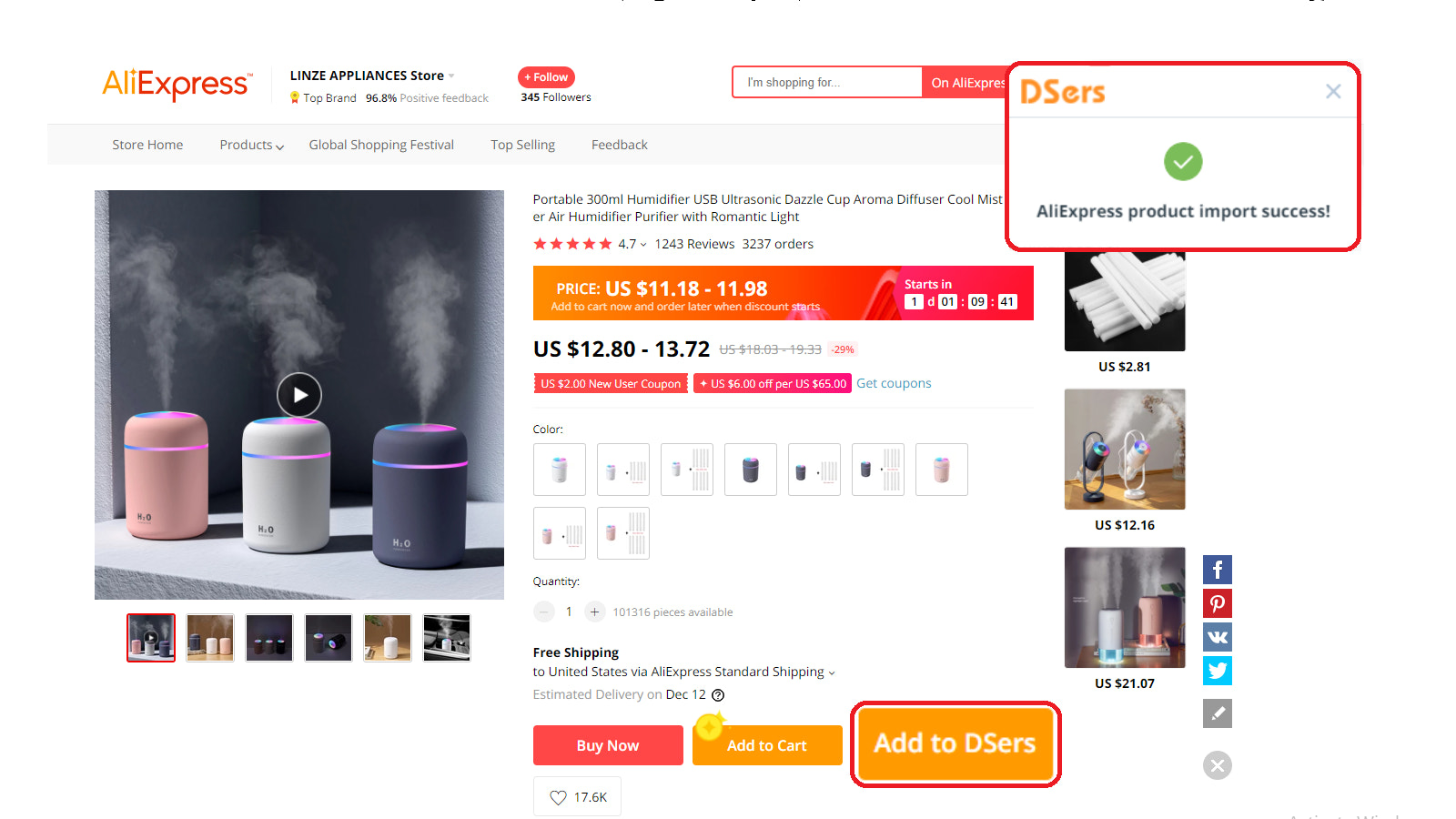
Learn more:
- 100+ Dropshipping Business Ideas: The Easiest Way to Sell Online
- How to Start A Dropshipping Business: A Complete Playbook
- AliExpress Dropshipping: A Complete Guide to Sourcing From AliExpress
- Trending Products to Sell

Free Guide: How to Find a Profitable Product to Sell Online
Excited about starting a business, but not sure where to start? This free, comprehensive guide will teach you how to find great, newly trending products with high sales potential.
Get How To Find A Product To Sell Online: The Definitive Guide PDF delivered right to your inbox.
Almost there: please enter your email below to gain instant access.
We'll also send you updates on new educational guides and success stories from the Shopify newsletter. We hate SPAM and promise to keep your email address safe.
2. Design and sell print-on-demand t-shirts
Another dropshipping model,print on demandputs inventory, shipping, and fulfillment in the hands of a third-party supplier. But unlike the dropshipping business idea above, the focus here is on customizing products with your own designs to create something original.
T-shirts, hats, phone cases, hoodies, skirts, tote bags, and more become canvases for your creativity. You can think up witty slogans for developers or references that resonate with cat owners—if there’s passion and pride within a community, there’s a potential t-shirt business you can start.
Even if you’re not a designer, you can find one to work with using freelance sites likeFiverr,Upwork,Dribbble, or99Designs.
With many print-on-demand services, you’re paying per product, so the base price per unit will be more expensive than if you were to order in bulk. But the advantage is that if a certain t-shirt design doesn’t sell, you haven’t actually paid for the item yet (only the design, if you outsourced it).
You can even uset-shirt mockup templatesso you don’t need to spend extra money on a full photoshoot for every new design.
There are a variety of print-on-demand platforms you can work with, many of which can be integrated with your Shopify store for seamless order fulfillment. However, be sure to always order a sample of your product (often offered at a discount) to make sure your custom products look good.

ViaVapor95
Learn more:
3. Launch your own book
A book is just another type of product when you think about it. As such, you can create one to serve a particular demand in the market.
Cookbooks, picture books, comic books, poetry books, photo books, coffee table books, and novels—if you’ve got the knowledge or creativity, there are a variety of original books you can bring to the market. The options are endless—that’s why it’s one of the best small business ideas to start.
How to start a business recommendations
- How to finance a small business with no money
- How to start a bookkeeping business
- How to start a business at 16
- How to start a business as a kid
- How to start a clothing business online
- How to start a slime business
- How to start a scrub business
- How to start a hat business
- How to start a subscription box business
Print-on-demand is a relatively safe way to test the waters and get started with self-publishing. It also gives you control over the quality and look of your book.
Lulu xPressandBlurbare popular platforms to create, order, and distribute your own books as physical and digital products. You could also sell it on third-party marketplaces likeAmazonorPowell’s.
While you can order one book at a time, costs naturally go down when you buy in bulk. Consider pre-selling orcrowdfundingyour book idea to ensure there’s demand and guarantee a certain number of sales so you can feel confident making a bulk order.
Launching your own book can be a great way to monetize a blog if you have or are looking to start one.
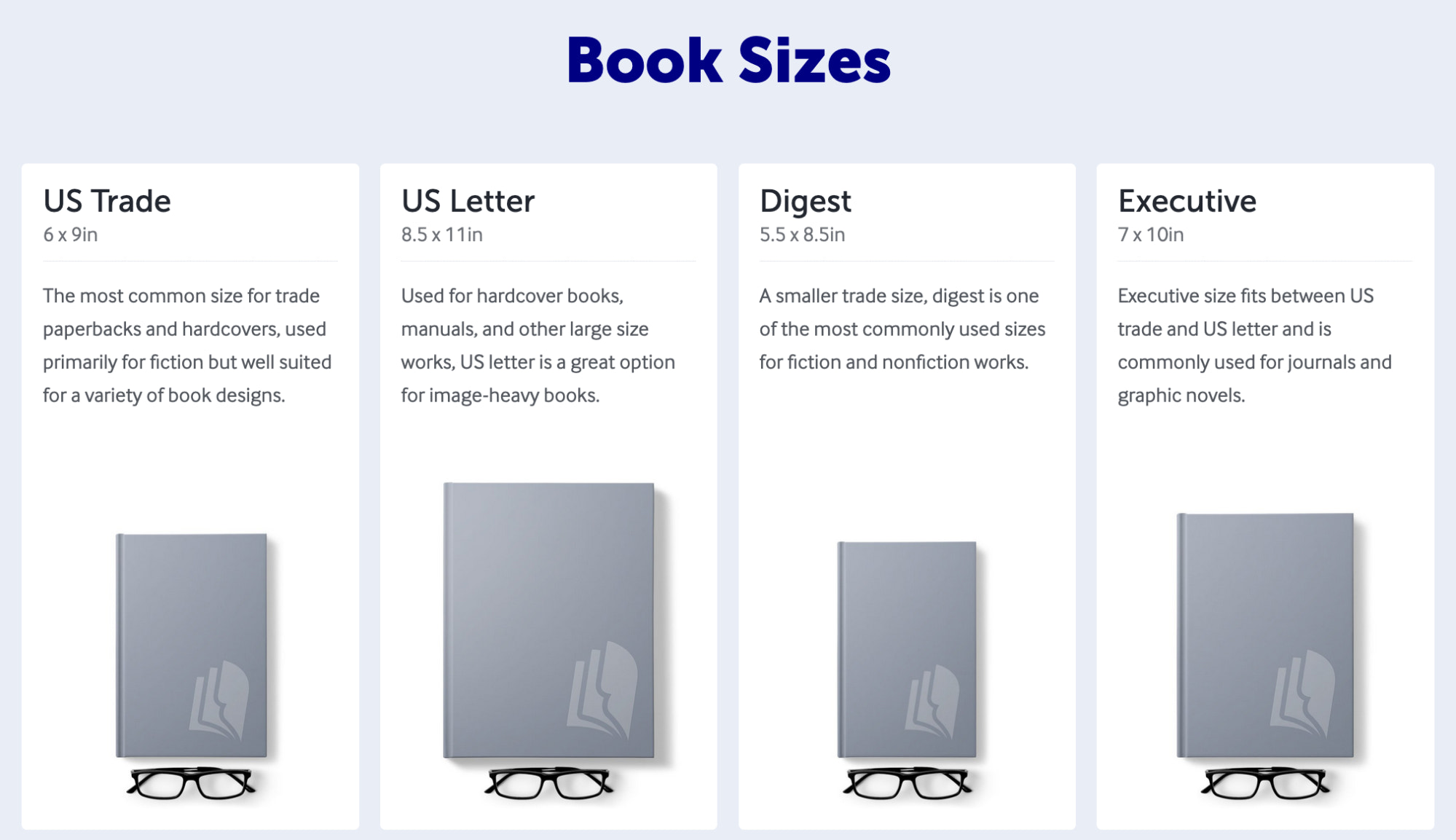
Learn more:
- How to Self-publish Your Own Book in 8 Steps
- How to Sell Books Online: Page-Turning Advice From the Pros
- The 10 Best Providers for Print-on-Demand Books
- How to start Dropshipping Books in 2023 (+ Top Suppliers)
4. Create digital products or online courses
Digital productslike music, courses,podcasts,和模板是独一无二的在这个low-inv列表estment small-business ideas. Unlike the others, they’re not tangible. There aren’t recurring manufacturing orshipping coststo worry about, so your margins can remain high, making it another no-brainer for being one of the best businesses to start.
The trick is figuring out what makes for a good digital product. What is useful enough that people are willing to pay to download it?
The answers range from original instrumental beats to stock photos that can be licensed to other creators to information products and templates that help people level up their skill sets in a particular field.
If you’ve got a talent that can be turned into a digital product, think about packaging it into a new stream of income.
Shopify has afree Digital Downloads appthat lets you offer digital products in your store as easily as physical products.

Learn more:
- How to Sell Music: 6 Ways to Make Money as a Musician
- Sell Photos Online: 18 Websites for Selling Your Photography
5. Sell print-on-demand posters, greeting cards, and prints
If you’re artistically inclined or know your way around a camera, you can dropship using a print-on-demand business model to let others physically own a piece of your work. Just be sure you have the rights to the content you want to print or are using public domain assets you can freely monetize.
If you’ve already got an engaged online following—say you’re a cartoonist or an urban photographer—you’re in an especially good position to give this small business idea a try.
根据打印机和你一起工作,你可以涂rn your work into products such as posters or framed wall art, even greeting cards. There are plenty of low-cost digital templates and mockup generators likePlaceityou can use to showcase your products without having to print out each item and conduct your own photo shoots.

ViaBaltic Club
Learn more:How to Sell Art Online: The Ultimate Guide
Free Webinar:
How to quickly start a profitable print-on-demand store
In our free 40-minute video workshop, we’ll get you from product idea to setting up an online store to getting your first print-on-demand sale.
6. Start a charitable business
Starting a non-profit organization isn’t the only path you can take to help fund a better world.
Having a mission to go along with a business and setting aside some profit for a cause gives social entrepreneurs a unique way to position their company in the market while addressing the issues they care about most.
While many social enterprises offer their own original products, you can also take any of the low-cost small-business ideas above and partner with a non-profit or execute that social good with your own hands, as long as you’re transparent about how it works.
As part of your marketing, you can share the impact that your customers are having by supporting your business, such as a blog post covering your work in the community or a real-time impact calculator on your website.
TheGive & Grow Shopify appmakes it easy to partner with charitable organizations and incorporate your mission into your business. You can set it up to donate a specific amount or a percentage of sales, or ask your customers to add a donation at checkout.

Learn more:
- What is Social Entrepreneurship? Types and Examples
- How This Social Entrepreneur Is Building a Better Detroit By Empowering Its Students
7. Sell a service
Offering services isn’t passive, but it certainly can be a lucrative way to gain self-employment. With services-based small business ideas, “time” is your inventory and your biggest investment. You’ve only got a limited supply of hours in your day. However, that makes it easier to get up and running if you’ve got skills that are in demand.
Writers, graphic designers, virtual assistants, SEO practitioners, cleaning service providers, dog walkers, real estate professionals, and more can build a business around their skills. You could offer these skills as an ongoing service or start a consulting business that advises on projects.
It’s one of the bestbusiness opportunitiesbecause it can be expanded with any of the other ideas above to create additional revenue streams by “productizing” services through physical or digital goods.
A photographer, for example, can service a local event whileselling prints online through their Instagramaccount. A freelance writer can sell a copywriting swipe file of high-converting sales copy. Coupling your service-based business with physical products can give you another source of income that isn’t tied directly to your time.
You can use theBookThatApporAcerill Appointment Bookingfor Shopify to let customers easily schedule a session or consultation or buy tickets to a class with you through your store.
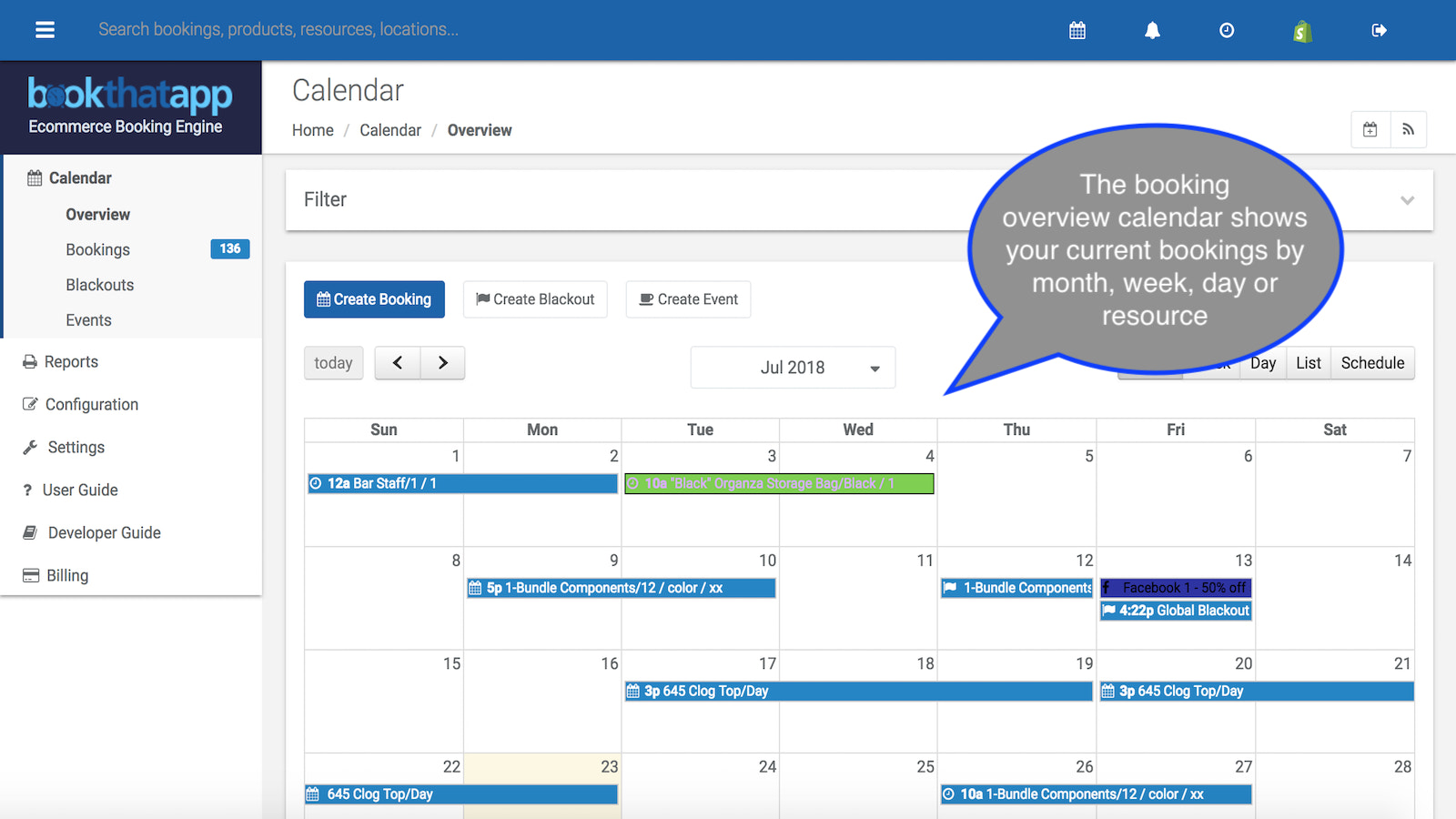
You can also offer your services through a freelance marketplace like Upwork to increase your chances of getting discovered by the people who need your skills.
Learn more:
- 12 Things to Sell on Shopify (Other than Physical Products)
- Diversify Your Offerings: Takeaways From 5 Service-Based Businesses Turned Retailers
8. Create an online fashion boutique
If you love fashion and sharing your sense of style online, you can consider creating your own online fashion boutique. You don’t need to become a fashion designer—you can simply curate items from other vendors into your own online store (using the dropshipping model we discussed earlier).
GET STARTED:Shopifyhas everything you need to bring your business to life and start selling. Get the tools and free resources you need to build, launch, and grow your business all in one place.
Dresses, shoes, swimwear, accessories, and more—you can build your own fashion brand using one of severalproduct-sourcing apps, model them on your own with product photos and social media posts, and build an online following as a trendsetter. Apps likeMyOnlineFashionStorelet you import various styles into your Shopify store.
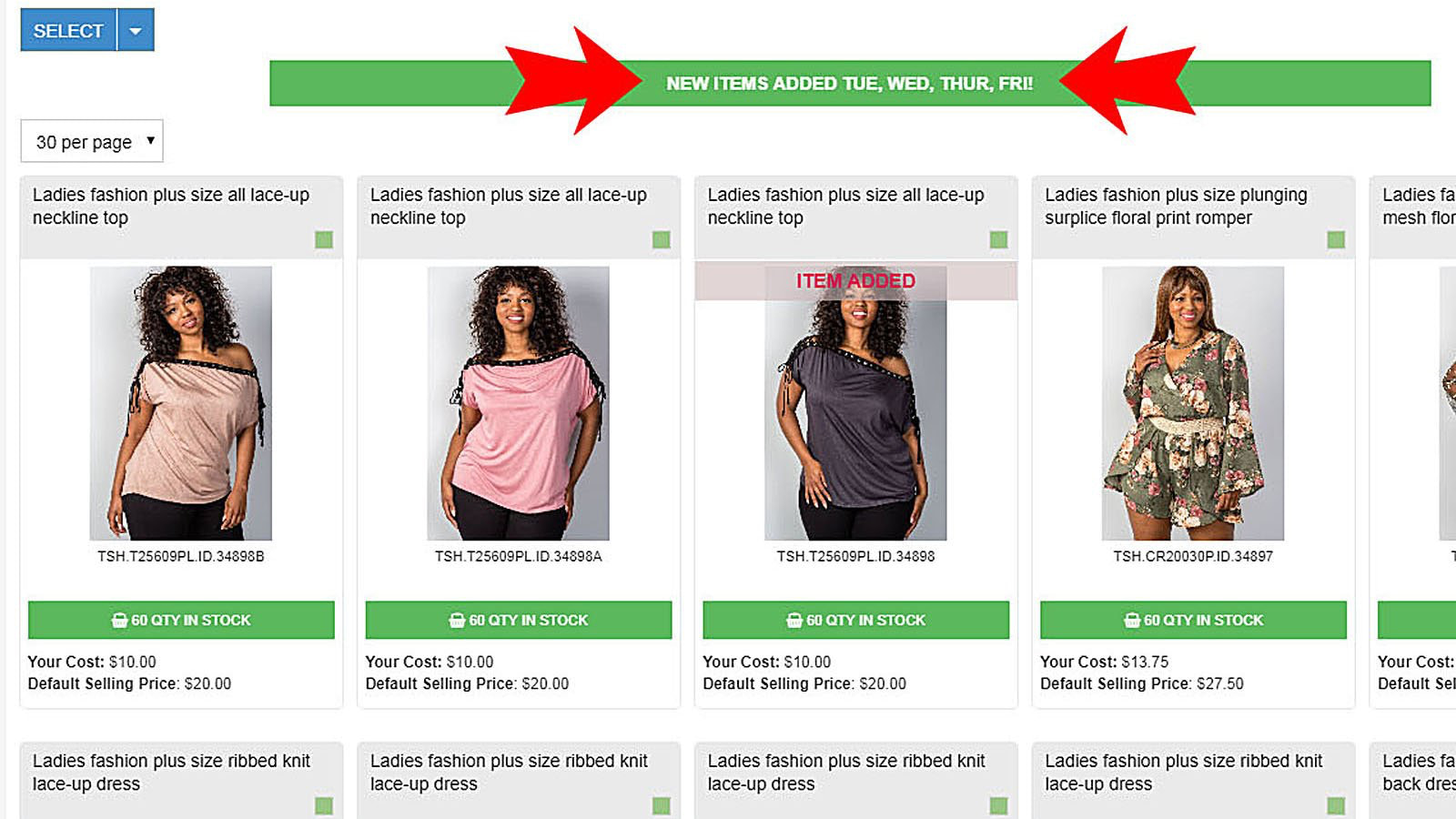
Learn more:
- How to Start a Clothing Line: Secrets from a Project Runway Designer
- Branding Secrets from 14 Fashion Industry Experts
9. Sell handcrafted and homemade goods
If you’re a maker—whether you DIY soap, candles, sauces, or pottery—you’re in a unique position to find a small business idea, because product development and procurement are literallyin your hands.
Unlike many of the other ideas on this list, you will need to consider shipping andinventory management, but you can start out simple on a per-order basis or with a small batch until you start generating consistent sales.
In fact, many makers on Shopify started out with ahome business idea, selling on Etsy or eBay, or to friends and family throughword of mouth, and grew into full-time small-business owners after establishing demand for their products.
Just be mindful of any regulations in your product category, especially for anything customers will eat, inhale, or put on their skin.
Brooklyn Candle Studiois one of many maker-owned businesses on Shopify that started on Etsy.
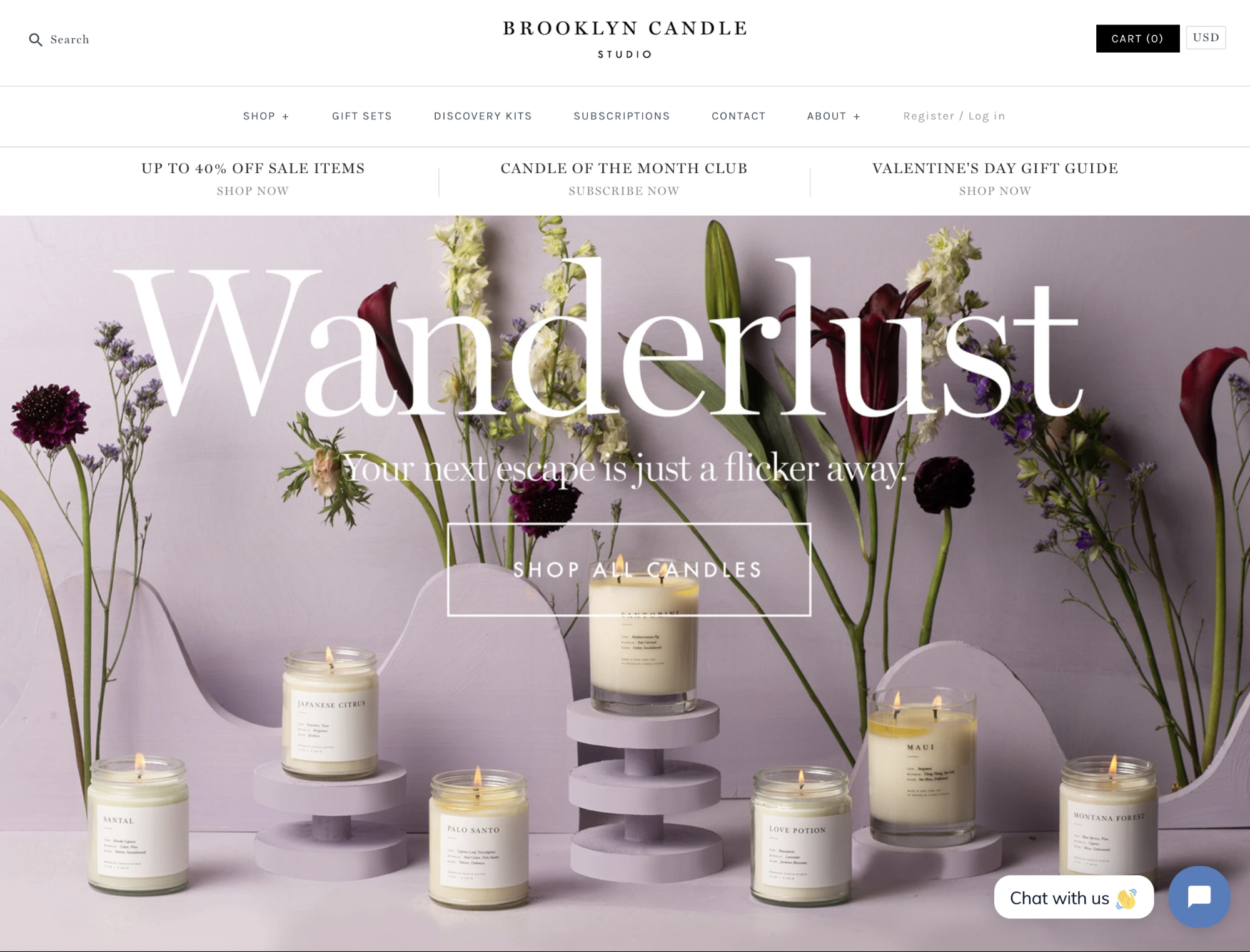
And Arounna Khounnoraj and John Booth are a couple who have been operatingbookhou, an online and physical shop selling handmade goods and functional bags.
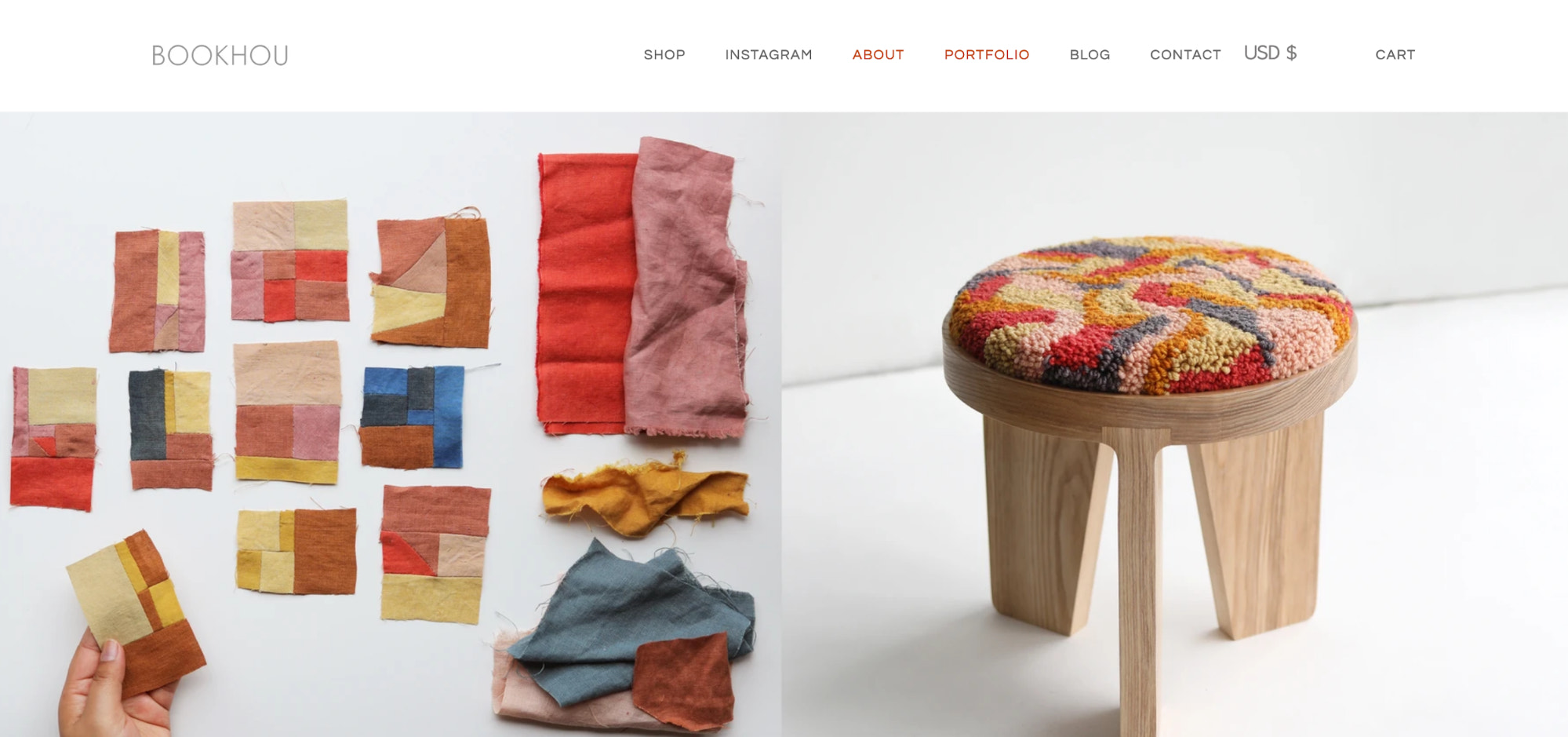
Learn more:
- How to Start an Online Food Business
- How to Start a Jewelry Making Business
- 16 Things to Make and Sell Online
- 12 Creative Ways to Make Money
10. Build an audience you can monetize
In today’s connected world, the ability to capture and keep the attention of others is an asset. It’s one that many businesses are even willing to pay for and one that many creators are able to convert into a business with multiple revenue streams.
Whether you choose to grow your following onYouTube, Instagram, or ablog(ideally a combination of different channels), you have many avenues for monetizing your audience:
- Sponsored posts on behalf of brands
- Becoming an influencer
- Selling physical or digital products (via any of the ideas on this list)
- Patreon
- A combination of the above (they’re not mutually exclusive)
Taking an audience-first approach to your small business idea means you’re playing the long game (it might be months until you’ve figured it out). But you don’t need millions of followers to do it—Instagrammer Kat Gaskin, for example,pulled off a $10,000 product launchwith only 3,000 followers for her brand,The Content Planner.
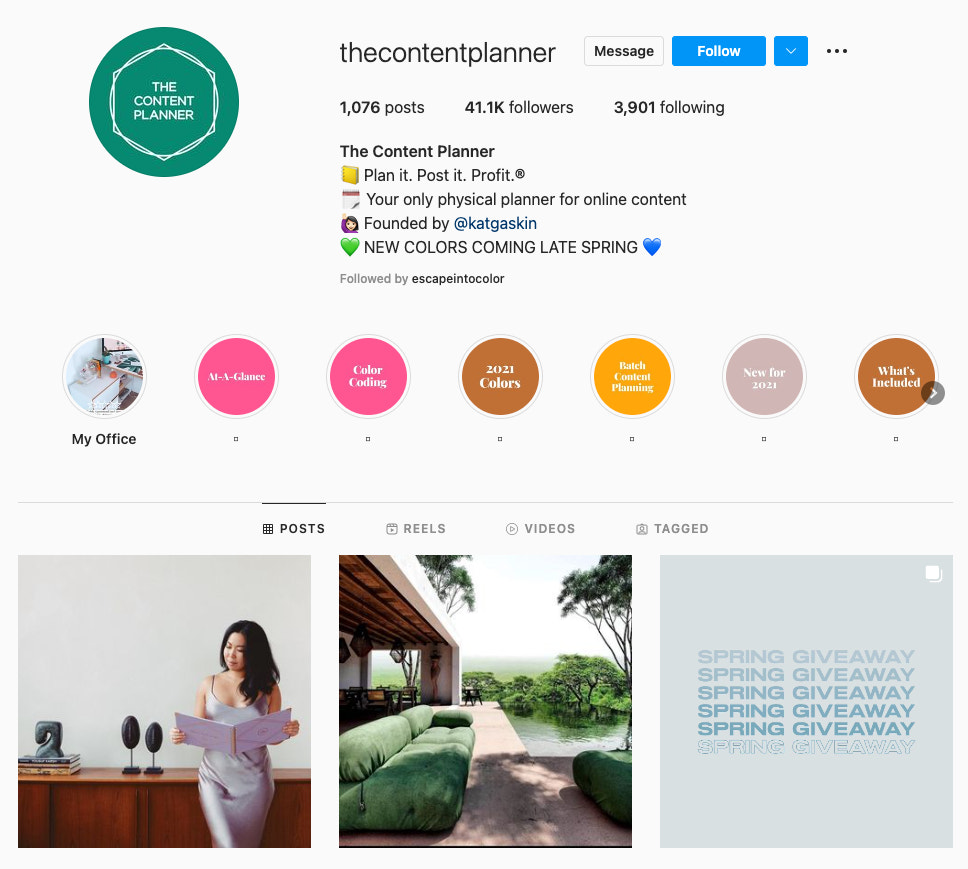
Learn more:
- How to Make Money on Instagram
- How to Get More Followers on Instagram
- How to Build an Email List that Builds Your Ecommerce Business
- What It Actually Takes to Become a Full-Time YouTuber
- The Right Way to Monetize an Audience (With Lessons From Wait But Why)
11. Start a pet business
The pet industry is ripe with opportunity for all kinds of small-business ideas. And it’s an industryworth more than $100 billion, so there’s plenty of demand. Yourpet businesscould be product- or service-based—selling accessories, food, or toys, or offering grooming, walking, or training expertise.
Perkie Printsmakes personalized printed pet products—everything from apparel to framed prints, plus fun projects in between.

On the service side of things,Let the Dog Outoffers dog walking and “bathroom breaks” to its customers.
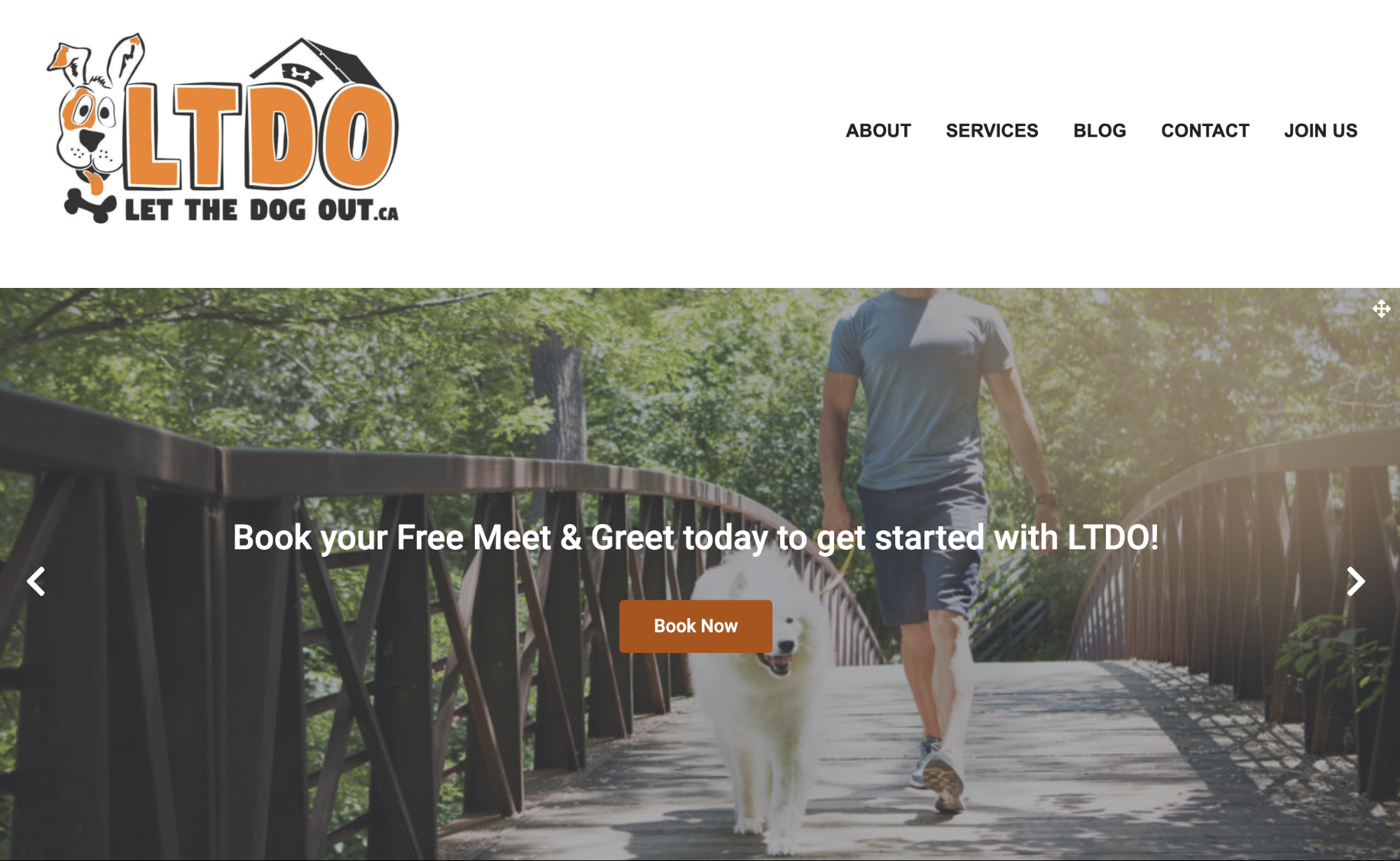
12. Create a membership program
Online memberships are ideal for entrepreneurs with an established active and engagedcommunity. They work much like a subscription-based business—customers make recurring payments in exchange for a virtual product or service.
Membershipsare great for managing members-only access to content on a website, and even for physical businesses that offer guided sessions online. Yoga studios, gyms, clubs, and art schools are a few examples of businesses that can easily take advantage of this business model.
Since this content is behind a gate that only paying subscribers can access, you can also host exclusive livestreams in addition to (or instead of) downloadable content.
Regardless of the route you take, be sure to record in a quiet space so the audio is clear and distraction free.
It’s also a good idea to useemail marketingto keep your members informed of new content. Emails, video teasers, and customer testimonials are great ways to build excitement for new launches.
And it’s easy to start your membership-based business with Shopify. Set up a new product just like you would for a physical product, but create a name and description that tells people about your membership services.
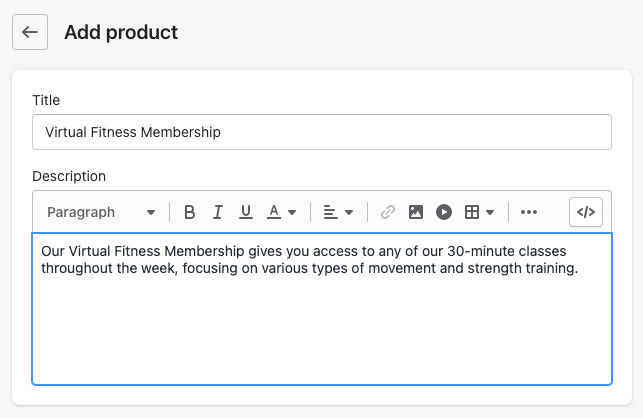
Make sure to unselect “This is a physical product” to remove shipping options at checkout. (Note: Some of the setup required might change depending on which apps you choose to use later in the process.)
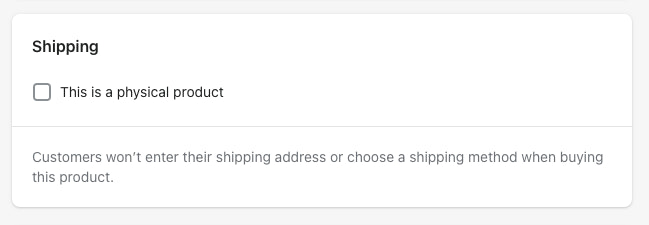
If you want to offer different options for your memberships, create variants. You can set different prices for each option and limit the number of times available, if needed, by editing each option.
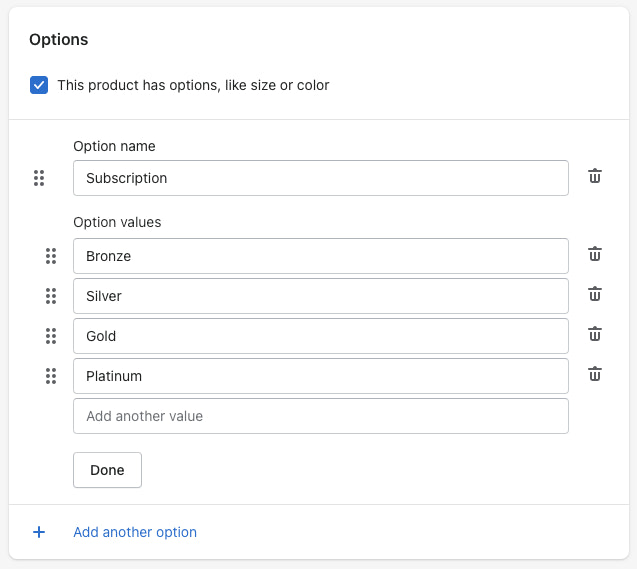
13. Join an affiliate marketing program
Affiliate marketing refers to a performance-based marketing tactic where a business pays people, a.k.a. affiliates, to promote and sell products for them. Every time an affiliate brings in a new customer, they receive a commission from the business.
Affiliates can promote products on their blogs, social media accounts, or websites, or in communities. For many, affiliate marketing is a low-costside hustle变成一个profitable businessover time.
To join an affiliate program, take the following steps:
- Find an affiliate program on sites likeShareASale,CJ, orLinkShare.
- Choose offers you want to promote.
- Get an affiliate link.
- Promote that link across your assets.
- Get a commission every time someone signs up or makes a purchase through your link.
Commission rates vary, depending on the company and offer. You could earn as low as 5% for each sale, while some commissions can be as high as 50% if you’re promoting a class or event. Some affiliate programs also offer a flat rate versus a percentage.
Learn more:
- Join Shopify’s Affiliate Marketing Program
- What is Affiliate Marketing? Examples and How to Get Started
- The 29 Best Affiliate Programs and Websites
14. Become a virtual event planner
Virtual event planning is a profitable business idea if you enjoy organizing and connecting people. Growing at23% per year, the significant rise in business events and adoption of virtual tools for conducting meetings will keep this market growth high. As a virtual event planner, you’ll be responsible for creating virtual conferences, networking opportunities, and educational sessions for companies around the world.
Facebook’smove into the metaversewill open up new opportunities for event planners in the near future.Party.Space, for example, hasraised capitalto scale up its metaverse-themed virtual events business. If you want job security for the future, virtual event planning is a good way to go.
15. Start a landscaping business
Got a love for nature and outdoor design? A landscaping business is a great option for you. Landscaping, also referred to as lawn care, means modifying and maintaining the visible features of an area of land. You’re responsible for creating beauty out of natural, living elements like flowers, grass, and trees.
The US landscaping market is expected to grow at acompound annual growth rate (CAGR) of 4.5% until 202. There’s growing demand for residential outdoor landscape maintenance in younger households across the country. Competition in the market is moderate. You’ll face a few leading landscaping companies like TruGreen, as well as smaller local service providers.
16. Test app development
Creating a million-dollar app or your own business is not easy. In fact,99.5%of consumer apps fail. Most apps don’t have product-market fit. They need a ton of marketing, and they’re expensive to create.
So, why bother putting this on our small-business ideas list? Because consumer app development isn’t the only path for entrepreneurs. New apps for theShopify AppStore crop up daily, with a market of motivated businesses eager to find the tools they need.
Sound interesting? Check outHow to Build a Shopify App: The Complete Guideon our Partners blog to learn more.
17. Offer child care
There is achild care crisishappening right now. Coronavirus exposure, day care closings, and rising costs have left parents with no choice but to take care of their kids at home.
对儿童保健服务的需求的增长了decreasing supply is a perfect mixture for starting a new business. President Joe Biden’s infrastructure bill has pledged federal spending to help fix the child care market too. If you enjoy taking care of kids and can get the proper licenses, a new child care business could be a good business idea for you.
Explore:Top 24 Achievable Business Ideas for Kids
18. Start an online coffee shop
Selling coffee can be profitable with a strong brand and the right marketing plan. Sure, coffee has a lot of competition. But that shouldn’t scare you away from thismultibillion-dollar industry. Selling a high-commodity product like coffee has many benefits:
- There is a high volume of customers.
- Customers typically associate small brands as having a higher quality than corporate brands.
- There are many niching opportunities.
Because coffee is so widely available, it’s easier to sell. People already want coffee, you just need to make them want your coffee.
Learn more:Sell Coffee from Home: What Does it Take to Launch an Online Café?.
19. Become a handyman
I grew up with a dad who was a handyman, always fixing things around the house: a plumbing issue, installing tile, cleaning out gutters, putting up a fence. He was always the guy friends and family would call on for odd jobs around the house. If only the internet has been popular in those days, he could have built his own business website and offered his services locally!
The home repair and improvement industry sits at around$500 billionin market value. Whether it’s fixing a boiler or building a patio deck, if you’re a handyman who likes to fix things, this could be a lucrative business for you.
20. Sell your photography
Got a passion for taking photos? Turn your hobby into a full-time photography business. Today, you don’t just have to sell services for weddings and corporate ad campaigns. You can easily set up a store and sell prints, posters, NFTs, and more. Or you can sell your photos on stock photography sites.
21. Become a social media management consultant
As of October 2022, there were over4.74 billion active social media usersaround the world. That’s nearly 60% of the world’s population. BetweenYouTube,Instagram,Facebook Messenger,TikTok, and all the other social networks available—brands need help managing their accounts.
A social media manager is responsible for creating and analyzing content for brands’ social accounts. Clients will pay you to create engaging content, write attractive bios, respond to comments, run ads, and more. You could charge by the hour or by project rate.
22. Start a beauty business
The beauty industry really pulled through the pandemic and the momentum continues to build. Our research shows that 55% of health and beauty business founders reported being satisfied with business performance throughout the pandemic and beyond. Businesses that sell online and offer different delivery services will continue to win.
Some product ideas with high demand are:
- Personal care products like hand soap and sanitizer
- At-home spa rituals like face masks
- Beauty technology like massage guns, smart mirrors, and makeup refrigerators
Learn more:How to Launch a Makeup Brand and Sell Online: The Ultimate Guide.
23. Housesitting and pet sitting
As travel increases, so does the need for home and pet care while people are away. And with the increase in remote work, long-term holidays are becoming more commonplace—so while you might be able to leave your home unoccupied for a weekend, a month-long trip may require some more care.
Housesitting and pet sitting are good business ideas to start if you feel comfortable caring for and staying in a stranger’s home, potentially with their pets.
You can create your own website on Shopify to market and sell your services, and there are also dedicated home and pet care websites and apps you can use. Here are some examples:
- HouseSitter.com: This website is for both house sitting and pet sitting. You can create a profile and apply to postings. People who need house/pet sitting can also browse sitters and reach out to them.
- Rover: Rover is a website and app specifically for pet sitting. On it, you can create a profile and apply to gigs. These arrangements include drop-in visits but not overnight visits or housesitting.
- Care.com: Care.com is a listing place where pet sitters can create a profile and list their experience. You can also apply to jobs posted by people seeking pet sitters. Care.com is also a good site to use if you offer senior care, tutoring, housekeeping, and child care services.
- TrustedHousesitters: TrustedHousesitters是一个伟大的地方开始OB欧宝娱乐APPyou need experience or testimonials. The platform specifically prohibits paid gigs, so these arrangements are viewed more as an exchange—you get a free place to stay, and they get free sitting.
Note, some pet sitters offer on-site services while others care for pets in their own homes. You can even add a dog walking business element to appeal to a wider range of people. Regardless of your choice, it’s important to communicate this upfront.
If you want to try these successful business ideas, it’s always important to invest time into creating a great profile. Choose pictures that show you happy and smiling—ideally with animals (be sure to get permission from the pet owners first). Fill out every section of your profile so it’s complete. Be specific about your history caring for homes and pets, and remember to include any specific qualifications or certifications that may give you a leg up against another potential sitter.
最终,这些新的最好的进攻计划business ideas is to use a combination of your own Shopify site and third-party platforms.
24. Phone accessories
Because so many people own mobile phones now, there’s a huge market for phone accessories. And there are many different ways you can go with these accessories—print on demand, handmade, niche by product type, dropshipping, and more.
Some ideas for phone accessories to sell include:
- Phone cases
- Car and desk holders
- Tripods
- Charms
- Earbuds/headphones
- Bluetooth speakers
- Portable chargers
- Wireless chargers
当清单你的手机配件出售,芮米mber to include which devices they’re compatible with. You don’t want to create a negative yet avoidable experience for customers who receive an item they can’t even use.
Learn more:How to Start a Phone Case Business From Home, Step by Step
25. Sell subscription boxes
If you’re not interested in creating your own products to sell, you can curate them. One of the best small-business ideas is to sell subscription boxes with curated products that follow a certain theme.
One of the great parts about subscription boxes is you can create them for pretty much every single niche out there. For example, featuring merchants and makers in your community is one of the best local business ideas for subscription boxes. You can also go for themes like yoga, beer brewing, or pets—the possibilities are pretty much limitless.
Like memberships, subscriptions are good business ideas to start because they create a recurring revenue stream. People have to proactively cancel their subscription if they don’t want to continue paying for it.
Subscriptions also lend themselves to collaboration. When you curate products from different merchants, you can get in front of their audiences—a whole group of potential new subscribers.
Learn more:How to Start a Subscription Business: A Brief Guide
26. Invest in vending machines
Here’s aunique business idea: vending machines. Yes, there’s money to be made with vending machines. Though the industry took a hit during the COVID-19 pandemic,预测indicate vending machines will bounce back.
下降的原因包括减少foot traffic—fewer people shopping, traveling, and going to work—and hygiene-related hesitations around touching surfaces. So if you’re opting to go this route, you may want to take a forward-thinking approach and look for vending machines that offer touchless options.
The key to making this a successful business idea is to offer the right products at the right location. Do your research to find high-trafficked areas and understand exactly who is walking by and what they might need at that moment. With a strategic approach, vending machines can be a profitable business idea with small investment and an overall great business idea.
Three tips for choosing the best business idea
The small business ideas we’ve covered might be easier to run when it comes to logistics, but that doesn’t make them easy. There are at least three things you should keep in mind as you consider your options, no matter what business you decide to start.
1. Focusing on a niche makes marketing easier
As with any business, marketing is what unlocks your success. It’s not enough to know that there’s demand for your products—you need to figure out ways to reach the people that are most likely to buy them, i.e., figure out your target market. You need to get the right visitors to discover your products.
Luckily, marketing is a lot easier when you’re catering to a specific target audience or identity (e.g., vegans, board game lovers, photographers in your city). You can producesocial media content that resonateswith these people or run ads that target their interests. Taking this approach also helps you project a consistent brand because you’ll have a more specific idea of who exactly you’re talking to.
Think about how you can zero in on a specific audience for your products and how the business you build can serve them. If you already have a sizable audience (a blog, a YouTube channel, or an Instagram account), maybe you can even find a way to base your business off of that existing audience.
Learn more:
- The 17 Best Places Ecommerce Entrepreneurs Go To Find Product Ideas
- Opportunity Knocks: 9 Niche Market Examples With Untapped Business Potential
- Calculating Market Demand: How to Find Product Ideas Your Customers Want
2. Pricing is about more than profit
Price your products too low and shoppers might assume they’re low quality. Price them too high and you risk scaring some customers off. In any case, you’ll need to find a sweet spot that also lets you factor in the cost to acquire customers and offer discounts, especially if you plan onpaying for ads. Getting your pricing right is something most business owners struggle with. To calculator your possible profit based on product prices you can use ourfree profit margin calculator.
With many of the small business ideas explored in this post, you may not be shipping your products, but you still need to cover the cost of shipping. Consider your shipping costs and how they will vary in the different countries you want to serve.
Many online sellers try to bake their shipping costs into their retail price so they can offer free shipping or at least a reasonable flat rate. Others focus on encouraging shoppers to add more items to their cart with conditional free shipping (e.g., free shipping on orders over $50) to maximize their profit.
At the end of the day, your prices can be tweaked and you can experiment with a variety of pricing strategies until you find one that works for you.
Learn more:
- The Price Is Right: 14 Strategies for Finding the Ideal Price for Your Products
- Predicting Profitability: How to Do Break-Even Analysis [+Free Template]
- Five Ways to Grow the Average Order Value of Your Online Store
3. Test, learn, and grow as you go
The pursuit of perfection can be one of the biggest hurdles in getting a business up and running. Keep in mind that nothing is set in stone.
Products can be swapped in and out fairly easily (especially when you’re not stuck with stock). Your store can be redesigned. Your prices can be adjusted. You can switch to a better supplier. And you can validate all of these decisions based on the dozens of signals you have at your disposal (traffic, how much time people are spending on your site, reviews, abandoned carts, etc.).
If your idea just isn’t working out the way you planned, think about how you can pivot before you quit.
>There are aspects of your own business you can always salvage if you try a different product or approach. The brand you invest time into creating and the followers you amass on social media or in your email list can be assets you repurpose for your next business idea.
Learn more:
- What are the Basic Ecommerce Metrics I Need to Focus on First?
- The Complete Guide to A/B Testing: Expert Tips from Google, HubSpot and More
How to start a small business
To start a businessyou need more than just a dream. To put the wheels in motion, you’ll need to:
- Use the time you have available:It’s good to have a balance of ambition and realism with your business aspirations.
- Identify a new business idea:This could come from your personal interests, a market opportunity, an experience—anywhere, really.
- Validate your business idea:This is where you identify if your idea is viable or not. Are people willing to spend money on this?
- Find a business name:A strong name should be short and simple, memorable, and original. If you need help, check out ourbusiness name generator.
- Make a plan:Yourbusiness planis critical for keeping your business on track, as well as securing partners, investors, lenders, and more.
- Understand business finances:Open your business bank accounts, secure funding, and set up strong bookkeeping and accounting processes. It might be a good idea to build out your goals in abusiness plan templateto help secure funding.
- Develop your product or service:The fun part! This is where you bring your product or service idea to life.
- Pick a business structure:Your business structure influences taxes, operations, personal liability, and more. Choosing the rightbusiness structureis about balancing the legal and financial protections you need with the flexibility offered by different options.
- Research licenses and regulations:Your business is subject to the laws governing businesses in your area, as well as laws and regulations specific to your industry. It’s important to understand this to avoid bigger problems down the road.
- Select your software systems:Accounting, email, ads, project management—you need an entire tech stack to run your business.
- Find a business location:Identify where you can open up a shop based on space, retail needs, and fulfillment needs.
- Plan workload and team size:If you plan to do all of the work yourself, you’re limited by the time you have available to invest. If you plan on hiring help, you’ll need to account for those costs—as well as the time involved in finding and onboarding freelancers or employees.
- Launch your business:Leverage your network, build buzz with promotions, and test paid ads to get word out about your newly launched business.
Coming up with great business ideas
There are many ways to come up with goodbusiness ideas你自己的。你或你认识的人ight have a poor personal experience with a company—and you know you can do better. Or maybe there’s a complete gap in the market: for example, demand for a specific product but no one meeting it. Other ideas come from everyday moments, in the shower or right before you fall asleep.
Brainstorming business ideas
If you’re feeling stuck on good business ideas or want to come up with more, there are a few ways to brainstorm even further. Write down all your ideas. Keep a brainstorming board, be it tactile or digital, and plaster your ideas there whenever they come to mind. Then revisit it with fresh eyes.
There’s power in numbers, too. Recruit help from colleagues or friends and family to brainstorm new ideas. Survey your existing customer base or audiences and get their ideas. Look at what people are saying on social media or searching online. Start with lots of ideas and then refine your list to the top ideas to explore further.
Protecting good small business ideas
Entrepreneurs have a few options when it comes to legal protection of their small business ideas, both now and in the future. The right one depends largely on the types of businesses you’re talking about.
- Copyright:Copyrighting protects your intellectual property, meaning that others can’t use it without your permission. This applies to text, art, photography, music, graphic design, and similar mediums.
- Trademark:Trademarkingis another intellectual property protection. Essentially, you “own” a word, phrase, logo, symbol, or design—preventing others from using it.
- Patent:Patentsare applicable for inventions—a patent prohibits anyone else from making, selling, or using your invention in their business for a period of time.
- Confidentiality and non-disclosure agreements (NDAs):These legal documents prohibit people from sharing information, as outlined in the NDA.
- Non-compete agreement:If you hire employees or contractors, you can have them sign this document, which prevents them from working with direct competitors.
- Work-for-hire agreement:Another document—this one only for employees—that means any work they do during their term of employment belongs to the employer, not the individual.
Getting funding for a business idea
One of the toughest but most important parts of starting a business is finding the money to get your idea off the ground. There are a few ways to getfunding for your business idea:
- Small-business loans:Shopify Capitaloffers funding for eligible merchants, who can apply to receive between $200 and $2 million in capital to grow their business.
- Investors:Lots of investors look for the next big thing—the types of businesses that go viral. Craft apitch for your business ideato present to investors.
- Crowdfunding:Crowdfundingis similar to getting investors, except you need lots of investors who are each willing to make a small financial commitment.
- Fund it yourself:It’s not realistic for everyone, but less expensive business ideas make it easier tocome up with the cash yourself. Just be aware of the risks involved.
TIP:Need funding to run and grow your business?Shopify Capitalmakes it easy to apply for funding quickly to use for inventory, marketing, and more. Automatically make payments as a percentage of your daily sales. No compounding interest. No schedules. No surprises.
Now go start a business
Thanks to a combination of technology, third-party suppliers, and the ability to quickly test ideas online, it’s easier than ever to build a successful business and start making sales without getting caught up in sourcing products, renting space, and managing inventory.
With this approach, you can test ideas before you invest in them, or start making good money part-time without all the inventory-related commitments that might stand in your way.
The small-business ideas covered above can even be combined in a variety of ways to start a business that’s uniquely yours. If the idea of sourcing, storing, and shipping inventory kept you from starting a business before, begin with an inventory-free, low-cost business model and grow from there. Use this list of online business ideas to get the creative juices flowing.
The world of self-employment can be challenging, but with a little hard work and know-how, you can work towards building your own business.
Ready to create your first business? Start your free trial of Shopify—no credit card required.
Business ideas FAQ
What are the most successful small business ideas?
- Ecommerce store owner
- Food trucks
- Personal trainer
- Pet businesses
- Online courses
- Online tutoring
- Personal wellness
- Bookkeeping and accounting
What are the top 10 businesses to start?
- Dropshipping business
- Selling print-on-demand shirts
- Sell digital products
- Become a blogger
- Sell freelance services
- Create homemade products to sell online
- Media (podcast, YouTube channels, etc.)
- Affiliate marketing
- Pet sitting and products
- Online fashion store
What is the easiest business to start?
The easiest businesses to start would be anything online: dropshipping stores, online courses, tutoring, fashion stores, or selling services. Online businesses require minimal startup costs and can easily scale, so you can earn more profit and do less work over time.
What business services are in high demand?
- Freelance writing
- Translating
- Accounting and tax advice
- Consulting (content marketing, search engine marketing, etc.)
- Web development
- House cleaning
- Pet grooming
- Uber driver



